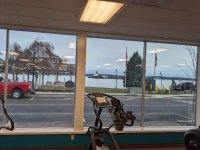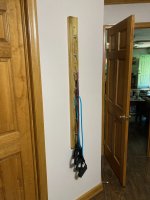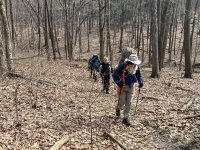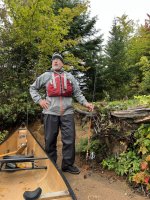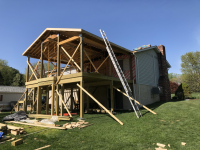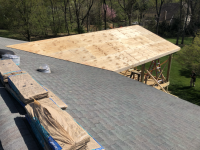As a couple of you have said, paddling does not get my heart rate up much, as far as I can tell. I am normally the bow paddler when racing, C2, C4, or voyageur canoe. Even on long-day marathon canoe races (Adirondack 90 miler, Yukon River Quest, Yukon 1000 mile), whether paddling at normal race cadence (60-70 spm) for miles at a stretch, or sprinting (~80+ spm) to stay ahead of or to get past a competitor, I don't feel that I get particularly winded at any time. During the Y1K, with no other racers in sight, just to break the boredom, we would sprint hard for 2 full minutes on a side, then slow to a sustained relaxed race pace for 2-4 mins, then sprint again for 2 mins on the other side. Repeat. Although I set the cadence pace for the team from the bow, I don't ever feel out of breath while paddling. The same is true when I train solo, or on either of my paddling machines.
However, during portages, I often have a hard time keeping up with my younger fast on foot running team mates. Breathing sucks. Thankfully, after the Le Mans stye sprint run start, there are no portages to run on the Yukon race route.
With plenty of snow on the ground and thick ice still on the lake today (the first day of spring), it's time for me to go hop on my machine at camp now.
However, during portages, I often have a hard time keeping up with my younger fast on foot running team mates. Breathing sucks. Thankfully, after the Le Mans stye sprint run start, there are no portages to run on the Yukon race route.
With plenty of snow on the ground and thick ice still on the lake today (the first day of spring), it's time for me to go hop on my machine at camp now.


